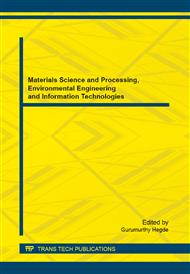p.551
p.555
p.559
p.563
p.567
p.571
p.575
p.579
p.583
QSTR Study for the Carcinogenicity of Alkylbenzenes
Abstract:
Carcinogenicity is an important toxicological endpoint which poses a great concern being the major determinants of health problem, a quantitative structure toxicity relationship (QSTR) study was performed for the prediction of the carcinogenicity of alkylbenzenes. The molecular descriptors of alkylbenzenes have been calculated with semi-empirical AM1 and E-dragon methods, and QSTR model for mice carcinogenic model of alkylbenzenes were developed using multiple linear regression (MLR) analysis.
Info:
Periodical:
Pages:
567-570
Citation:
Online since:
October 2014
Authors:
Price:
Сopyright:
© 2014 Trans Tech Publications Ltd. All Rights Reserved
Share:
Citation:


